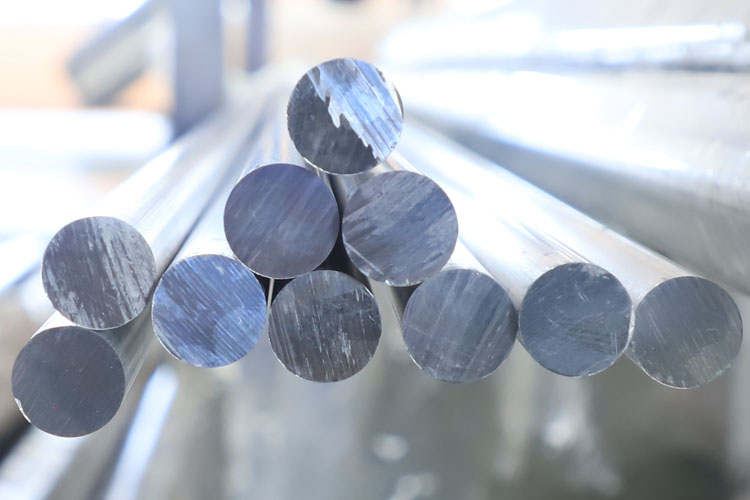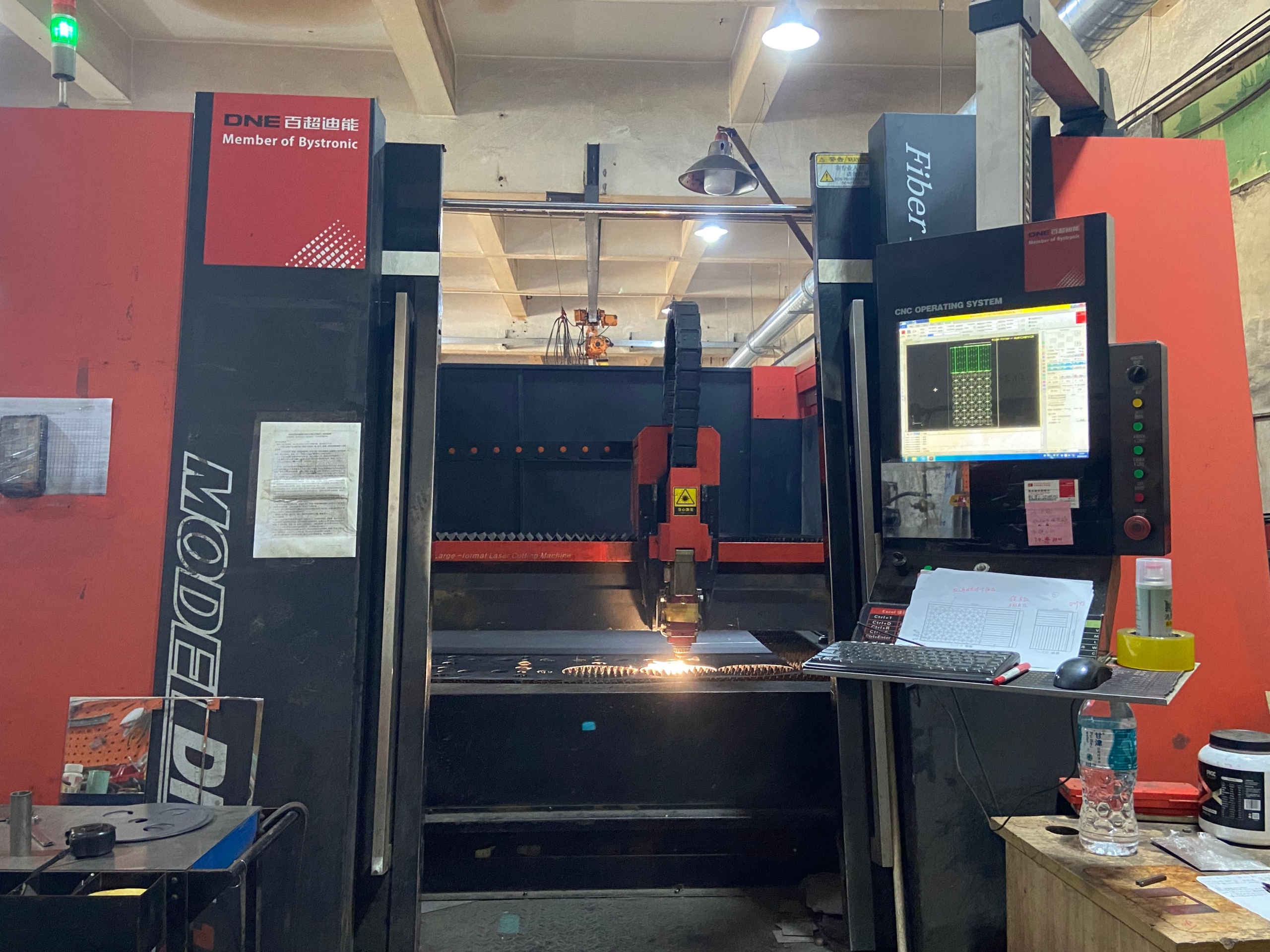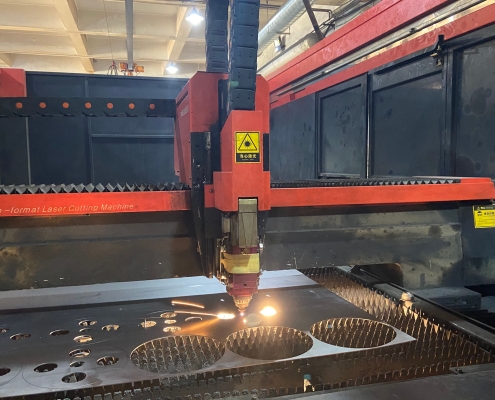10 Ways To Cut Stainless Steel Sheet
Stainless steel sheets play an important role in aerospace, automobile manufacturing, and many other fields due to their excellent corrosion resistance and aesthetics. If you want to know how to cut stainless steel plates using various tools, this article will help you.
10 Ways to Cut Stainless Steel Sheet
There are many different ways to cut stainless steel sheet. Next, we will take a deep look at 10 efficient ways to cut stainless steel sheets.

1. Using a Hacksaw
Hacksaw is a traditional and flexible method for cutting stainless steel, especially suitable for small quantities, non-standard sizes or on-site cutting of stainless steel sheets. The hacksaw gradually cuts the stainless steel sheet material through the reciprocating motion of the saw teeth. Achieve cutting purpose.
2. Use a Band Saw
Band saw cutting is a method of continuously cutting stainless steel sheets using a band saw. The band saw cuts the stainless steel sheet along a preset path at a constant speed and pressure. This method has the characteristics of high cutting efficiency and stable operation, and is suitable for batch cutting of medium and thick sheets. The accuracy of band saw cutting is greatly affected by the material, tooth shape and cutting parameters of the saw blade. Therefore, in actual operation, it is necessary to select the appropriate saw blade and cutting parameters according to the material and thickness of the stainless steel sheet.
3. Use a Miter Saw
Miter saws can achieve precise bevel and angle cutting by adjusting the angle of the saw blade. Miter saws are usually equipped with high-hardness alloy saw blades, which are specially treated to easily cope with the high hardness and wear resistance of stainless steel sheets. In addition, miter saws are also equipped with powerful motors and stable transmission systems to ensure a smooth and efficient cutting process.
4. Use an Angle Grinder
An angle grinder is a highly efficient and multifunctional tool that uses the powerful power of an electric motor to drive a grinding wheel or cutting disc to rotate at high speed. The cutting force and grinding force generated by this rotation enable the angle grinder to quickly cut the surface of the workpiece.
5. Use a Plasma Cutter
Plasma cutting is a high-energy density cutting method that uses a high-temperature plasma arc to melt metal. Under the precise control of the CNC system, the plasma arc can cut quickly and accurately along a preset path. This method is particularly suitable for cutting thick stainless steel sheets, with high cut surface finish and small heat-affected zone, which reduces the workload of subsequent machining. At the same time, plasma cutting also has the advantages of complex cutting shapes and flexibility, meeting the needs of modern industry for diversified products.
6. Use a Laser Cutter
CNC laser cutting machines focus high-energy laser beams to instantly melt and vaporize stainless steel sheets, achieving non-contact cutting. This cutting method is not only fast and precise, but also has smooth cuts without burrs, and does not require subsequent grinding. Laser cutting is also suitable for small-batch, multi-variety production models, meeting the market’s demand for personalized, customized products.

7. Use a Water Jet Cutter
Water jet cutting is an environmentally friendly technology that uses high-pressure water and sand to cut. Under the precise control of the CNC system, the high-pressure water flows at a very fast speed to impact the surface of the stainless steel sheet, and the sand plays a grinding role, which together achieves cutting. This method is particularly suitable for materials that are sensitive to heat or easily deformed, such as stainless steel sheets. Water jet cutting has the advantages of no thermal deformation, no chemical pollution, and high cutting accuracy, which is suitable for the machining of precision parts.
8. Use Oxyacetylene Flame
Oxyacetylene flame cutting is a traditional thermal cutting method that melts stainless steel sheets through the high-temperature flame generated by the combustion of oxyacetylene mixed gas. With the assistance of CNC technology, the automatic cutting of stainless steel sheets can be achieved by accurately controlling the flame path and cutting speed. This method is low-cost and simple in equipment, and is particularly suitable for rough processing of thick plates and on-site operations. However, since flame cutting will produce a large heat-affected zone and has certain requirements for the operating environment, special attention should be paid to safety protection measures when using it.
9. Punching With a Punch Press
Punch punching is a cutting method that uses a punch and a die to punch and form stainless steel sheets. With the support of CNC technology, complex dies can be accurately designed and manufactured to achieve one-time forming and cutting of stainless steel sheets. This method is particularly suitable for the production of large quantities and standardized parts, with the advantages of high production efficiency and low cost.
10. Using EDM Machine Tools
In the fine machining and complex shape cutting of stainless steel sheets, EDM machines have shown their unique advantages. Through pulse discharge between positive and negative electrodes, EDM machines generate instantaneous high temperatures in a very small area, causing local materials of stainless steel sheets to melt and vaporize quickly, thereby achieving material removal.
Stainless Steel Grades and Cutting Thicknesses.
Stainless Steel Grades
Stainless steel grades are usually classified based on factors such as its chemical composition, mechanical properties and corrosion resistance.
Common stainless steel grades include SUS302, SUS304, SUS316, etc.
Stainless Steel Cutting Thickness
Thin plates: The thinner thickness ranges from 0.3 to 0.7 mm. These plates are usually used to make precision parts, thin sheets, decorative parts, etc.
Medium and thick plates: Slightly thicker ones are 1.0 mm, 1.2 mm, and 1.5 mm, and thicker ones are 2.0 mm, 2.5 mm, and 3.0 mm.
Thick plates: Thicknesses range from 18mm, 25mm, 35mm, 50mm and 60mm, and even thicker plates are available. These plates are mainly used in heavy structures, shipbuilding, bridge construction and other fields.
What do You Need to Prepare for Stainless Steel Cutting?
-
Choose a Stable Work Area
Stable table: Choose a solid and stable workbench to ensure that it can stably support the stainless steel sheet and the impact force generated during cutting.
Space planning: Make sure there is enough space in the work area so that stainless steel sheets, cutting equipment and operators can move freely to avoid accidents caused by cramped space.
-
Prepare the Necessary Tools and Equipment
Cutting tool selection: Select appropriate cutting tools according to the material, thickness and cutting requirements of the stainless steel, such as manual or electric saws, angle grinders, plasma cutters, etc.
Personal protection: Equip with necessary personal protective equipment, such as safety glasses, protective gloves, etc., to protect operators from splashing objects.
Auxiliary tools: Prepare auxiliary tools such as a workbench, measuring tape, marking pen, etc. to facilitate accurate measurement and marking of cutting lines.
-
Keep the Work Area Clean
Tool placement: Place cutting tools and auxiliary tools neatly in designated locations to avoid confusion that may cause operational inconvenience or safety accidents.
Regular cleaning: Clean up waste and debris in the work area in a timely manner to keep the environment clean and tidy, which will help improve work efficiency and product quality.
-
Environmental Factors
Adequate lighting: Make sure the work area is well-lit so that the operator can clearly see the cutting line and the operation process.
Temperature and humidity control: Whenever possible, pay attention to controlling the temperature and humidity in the working area to avoid the adverse effects of extreme environments on cutting results and equipment performance.
What is the Easiest Way to Cut Stainless Steel Sheet?
For the simplest method of cutting stainless steel sheets, if the requirements are not high and the material is thin, you can choose manual shearing or power shears.If higher precision and efficiency are required, laser cutting or plasma cutting can be considered;
When choosing a cutting method, it is also necessary to make comprehensive considerations based on the specific cutting task, material properties, etc.
What are the Common Problems in Cutting Stainless Steel Sheets?
Glitch Problem:
Small regular burrs in the shape of drops are caused by reasons such as laser focus position deviation, insufficient laser output power or excessive cutting line speed.
Long irregular burrs on the cut edge may be caused by improper cutting process, local overheating or large temperature difference with other places, resulting in internal stress.
Yellowing or Discoloration of Cut Edges:
This is usually caused by excessive temperatures during cutting, which causes oxidation on the stainless steel surface.
Uneven Cutting Surface:
Improper settings of parameters such as cutting line speed and laser power, or insufficient equipment accuracy may result in an uneven cutting surface.
Sparks Flying:
Sparks generated during cutting may cause fire or burn operators. Therefore, flammable items must be removed from the working area before cutting and protective equipment must be worn.
Material Deformation :
Due to the low thermal conductivity of stainless steel, it may deform due to thermal expansion and contraction during the cutting process.
In Conclusion
Whether using cutting tools such as hacksaws, miter saws or band saws, it is crucial to ensure that the appropriate blades are selected, because any improper selection may lead to tool damage and material waste, which in turn affects the overall processing effect and cost-effectiveness. Therefore, continuous efforts to improve and optimize cutting technology and ensure the precise matching of tools and materials are the way to improve the quality and efficiency of stainless steel plate cutting and meet the diverse needs of the market.
Start Your Stainless Steel Cutting Project

With state-of-the-art tools and technology, VMT not only focuses on providing accurate cutting services, but also covers comprehensive sheet metal fabrication services to ensure that every customer can get first-class results to meet their diverse metal processing needs. We have an experienced and skilled team of professionals who are committed to making every project a masterpiece.
When it comes to stainless steel cutting technology, VMT is your rare partner of choice. We are well-versed in the characteristics of stainless steel materials and can accurately handle various complex cutting challenges. At the same time, combined with sheet metal fabrication services such as bending, stamping, welding, etc., we provide customers with a one-stop solution from design to finished product.
Frequently Asked Questions About Cut Stainless Steel
What are the Best Tools for Cutting Stainless Steel?
The best tool for cutting stainless steel depends on the type of stainless steel, thickness, and precision required for cutting. Therefore, there is no absolute “best” tool, and the selection should be evaluated based on specific needs. Commonly used tools for cutting stainless steel include; laser cutting machine , plasma cutting machine, water jet cutting machine, etc.
Why is Stainless Steel Difficult to Cut?
Stainless steel is prone to work hardening during the cutting process, which leads to increased cutting load and greater cutting difficulty.
How to Cut Stainless Steel Without Discoloration?
To cut stainless steel without discoloration, you can take the following measures:
Choose the right tool: Use coated carbide tools or ceramic tools with good wear resistance to reduce tool wear and cutting heat generation during the cutting process.
Control cutting parameters: Reasonably set cutting speed and feed rate to reduce cutting heat and cutting force, and avoid discoloration of the workpiece surface due to high temperature.
Make full use of coolant: Make full use of coolant during the cutting process to reduce the cutting temperature through continuous spraying in the cutting area to prevent oxidation and discoloration of the workpiece surface.
What is the Hardest Stainless Steel?
The hardest stainless steel is 440C stainless steel, which is a martensitic stainless steel with a hardness of HRC58-60.



